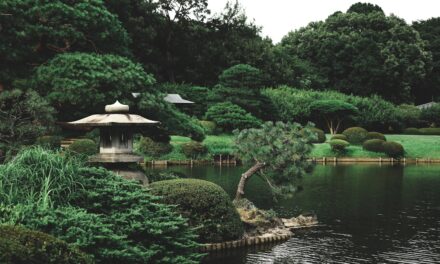Texture is an essential element in the realm of visual art, serving as a bridge between the viewer and the subject. In pencil drawing, texture can evoke a sense of realism, depth, and emotion, transforming a simple sketch into a captivating piece of art. The study of texture in pencil is not merely an exercise in observation; it is an exploration of how light interacts with surfaces, how materials convey their inherent qualities, and how artists can manipulate these elements to create compelling imagery.
This article delves into the intricacies of texture studies in pencil, focusing on various materials such as rocks, metal, and water, while also providing insights into techniques, tools, and tips for aspiring artists. The beauty of pencil drawing lies in its versatility. With just a few graphite pencils and paper, artists can create a myriad of textures that mimic the natural world.
From the roughness of stone to the smooth sheen of metal, each texture tells a story and invites the viewer to engage with the artwork on a deeper level. By understanding the characteristics of different materials and mastering the techniques to represent them, artists can elevate their work and enhance their ability to communicate visually. This exploration will not only benefit those who wish to depict realistic subjects but also those who seek to infuse their drawings with emotional resonance through texture.
Summary
- Texture studies in pencil are an important aspect of drawing, allowing artists to capture the tactile quality of different surfaces.
- Rocks offer a diverse range of textures, from rough and jagged to smooth and polished, providing an excellent subject for texture studies in pencil.
- Metal surfaces can be challenging to capture in pencil, but with the right techniques, artists can convey the sheen and texture of metal in their drawings.
- Depicting water’s texture in pencil requires an understanding of its reflective and fluid nature, as well as the use of specific pencil techniques.
- Tools and materials such as different grades of pencils, blending stumps, and textured paper are essential for creating realistic textures in pencil drawings.
Understanding the Texture of Rocks
Rocks are one of nature’s most diverse materials, exhibiting a wide range of textures that can be both challenging and rewarding to capture in pencil. The surface of a rock can vary from smooth and polished to rough and jagged, depending on its composition and the forces that shaped it. For artists, understanding these variations is crucial for creating realistic representations.
Observing the interplay of light and shadow on a rock’s surface can reveal its texture; highlights may indicate smoothness, while deep shadows can suggest roughness or irregularities. To effectively depict the texture of rocks in pencil, artists should begin by studying their subject closely. This involves not only looking at the rock’s surface but also considering its form and how it interacts with its environment.
For instance, a weathered stone may have a crusty exterior with fine cracks and crevices that tell a story of erosion over time. By using techniques such as hatching, cross-hatching, and stippling, artists can replicate these textures on paper.
Capturing the Texture of Metal in Pencil
Metal presents a unique challenge for artists due to its reflective properties and smooth surfaces. Unlike rocks, which often have a matte finish, metals can exhibit a high degree of shine and gloss that requires careful observation and technique to replicate accurately. The key to capturing metal’s texture lies in understanding how light interacts with its surface.
Highlights are crucial in conveying the reflective quality of metal; they should be placed strategically to suggest curvature and form. When drawing metal objects, artists should pay attention to the subtle variations in tone that occur across the surface. A polished metal surface may reflect light sharply, creating bright highlights alongside deep shadows that define its shape.
Techniques such as blending can be particularly effective for achieving smooth transitions between light and dark areas. Additionally, using harder pencils for fine details and softer pencils for shading can help create a more dynamic representation of metallic textures. By experimenting with different techniques and observing real-life metal objects closely, artists can develop their ability to depict this challenging material convincingly.
Techniques for Depicting Water’s Texture in Pencil
Water is one of the most fluid and dynamic elements in nature, making its texture both fascinating and complex to capture in pencil. The surface of water can vary dramatically depending on its movement—still water may appear smooth and reflective, while turbulent water can create ripples and waves that distort light. To effectively depict water’s texture, artists must consider both its physical properties and the way it interacts with light.
One effective technique for illustrating still water is to focus on reflections and highlights. By observing how light bounces off the surface, artists can create a sense of depth and realism. Using soft pencils for shading allows for smooth gradients that mimic the gentle undulations of water.
Conversely, when depicting moving water, techniques such as quick, short strokes can convey the energy and motion inherent in waves or splashes. Capturing the interplay between light and shadow is essential; artists should pay attention to how darker areas indicate depth while lighter areas suggest movement or reflection.
Tools and Materials for Texture Studies in Pencil
The right tools and materials are fundamental to successful texture studies in pencil drawing. While graphite pencils are the primary medium, artists should consider using a range of hardness levels—from hard (H) pencils for fine lines to soft (B) pencils for rich shading. Each type of pencil offers unique qualities that can enhance texture representation; for instance, softer pencils produce darker marks that can convey depth, while harder pencils allow for precise detailing.
In addition to pencils, quality paper plays a significant role in achieving desired textures. Textured papers can add an additional layer of interest to drawings by interacting with pencil strokes in unique ways. Smooth papers are ideal for detailed work where precision is key, while textured papers can enhance the appearance of rough surfaces like rocks or foliage.
Other tools such as blending stumps or tortillons can help artists achieve smooth transitions between tones, while erasers can be used creatively to lift graphite and create highlights or refine details.
Tips for Achieving Realistic Texture in Pencil Drawings
Observation is Key
One essential tip is to study real-life objects closely before attempting to draw them. Observing how light interacts with different surfaces will inform your approach to rendering textures accurately.
Layering for Control
Take time to analyse the nuances of each material—note how shadows fall, where highlights appear, and how different surfaces reflect or absorb light. Another important aspect is layering. Building up layers of graphite gradually allows for greater control over tone and texture.
Varying Pencil Pressure
Start with light strokes to establish basic shapes before gradually adding darker tones for depth.
Additionally, varying your pencil pressure can create different effects; lighter pressure yields softer lines while heavier pressure produces bold marks that can suggest roughness or depth.
Exploring Different Pencil Strokes for Texture Studies
The variety of pencil strokes available to artists is vast, each offering unique possibilities for texture studies. Hatching involves drawing parallel lines close together; this technique is effective for creating shadows or suggesting form. Cross-hatching builds upon this by layering lines at different angles, allowing for richer textures and deeper shadows.
Stippling is another technique worth exploring; it involves creating texture through small dots rather than lines. This method can be particularly effective for depicting fine details or soft textures like skin or fabric. Additionally, scumbling—where small circular motions are used—can create a sense of softness or fuzziness that may be useful when representing certain organic textures like foliage or clouds.
Experimenting with these various strokes will not only enhance your ability to depict different textures but also allow you to develop your unique artistic style.
Conclusion and Further Exploration of Texture Studies in Pencil
In conclusion, texture studies in pencil drawing offer an exciting avenue for artistic exploration and expression. By understanding the characteristics of various materials—such as rocks, metal, and water—artists can develop their skills in capturing realism through texture. The techniques discussed provide a foundation upon which aspiring artists can build their knowledge and refine their abilities.
As you continue your journey into texture studies, consider expanding your exploration beyond traditional subjects. Experiment with unconventional materials or abstract representations of texture to challenge your creativity further. Engaging with different styles and techniques will not only enhance your technical skills but also deepen your appreciation for the intricate beauty found within textures in art.
Ultimately, mastering texture in pencil drawing opens up new dimensions in your artistic practice, inviting viewers into a richer visual experience that resonates on multiple levels.
If you enjoyed exploring the intricate details of rocks, metal, and water through pencil texture studies, you may also appreciate the article “Simplified Impressionism: Translating Light with Oil Paint”. This article delves into the art of capturing light and creating vibrant, expressive paintings using oil paint. It offers insights into how artists can use colour, brushwork, and composition to convey the essence of a scene and evoke emotion in the viewer.


